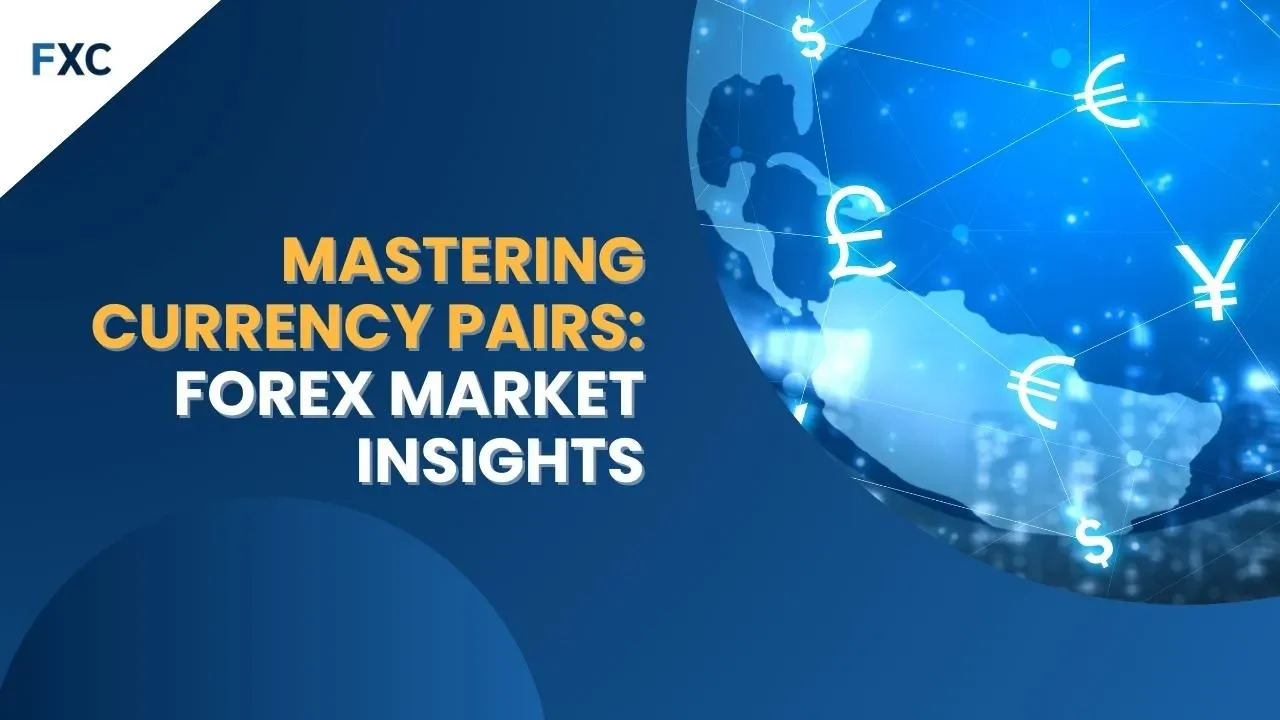In the always-changing financial markets, the foreign exchange (forex) market is the biggest and smoothest one, with daily trades going over $6.6 trillion in 2020. If you want to be a forex trader, knowing how currency pairs work is key to doing well. In this easy-to-follow guide, we’ll look at how currency pairs function, dig into the forex market’s setup, and give helpful advice to boost your trading abilities. By understanding the basics of currency pairs, you’ll be on a great path to conquering the forex market.
Currency Pairs: The Foundation of Forex
Forex trading means buying one currency and selling another at the same time. The two currencies create a currency pair, shown as a three-letter code for each, like EUR/USD (Euro/U.S. Dollar). The first currency (base) is bought, and the second (quote) is sold. The exchange rate between them shows the base currency’s worth compared to the quote currency.
Main, Smaller, and Unique Currency Pairs
In the forex market, there are three kinds of currency pairs: major, minor, and exotic.
Major Pairs: Best Currency Pairs To Trade For Beginners
- EUR/USD (Euro/US Dollar): Known as the “euro dollar”, this is the most traded currency pair globally. Given its high liquidity, spreads tend to be low, making it a favorite among new traders. The economies of the US and the Eurozone are significant global players, so there’s a plethora of information available on them.
- USD/JPY (US Dollar/Japanese Yen): As the most traded pair in Asia, the “dollar yen” offers a blend of Eastern and Western economies. Japan, being an export-driven economy, often has interventions, which can present both challenges and opportunities.
- GBP/USD (British Pound/US Dollar): Nicknamed the “cable”, this pair connects two significant economies. Historical ties, trade relationships, and geopolitical events often influence the GBP/USD.
- USD/CHF (US Dollar/Swiss Franc): Known as the “dollar Swiss”, Switzerland’s banking-driven economy and its neutrality in global affairs make this pair an interesting one. It often inversely correlates with the EUR/USD.
Factors to Consider
When selecting a currency pair, new traders should consider:
- Liquidity: Major pairs, as mentioned above, tend to have higher liquidity, which translates to tighter spreads and less price manipulation.
- News and Analysis: Major economies have more coverage, making it easier for beginners to find information and make informed decisions.
- Volatility: While volatility can offer trading opportunities, it can also increase risk. Pairs like the AUD/JPY or GBP/JPY can sometimes exhibit higher volatility due to geopolitical factors or economic releases.
Example: Trading EUR/USD
For instance, a beginner choosing the EUR/USD pair might start by understanding key economic indicators from both the US and the Eurozone. Monitoring factors like interest rate decisions, employment data, and political events can provide insights into potential price movements. For example, if the US Federal Reserve announces an interest rate hike, the USD might strengthen against the euro, influencing a trader’s decisions.
Minor Currency Pairs:
- Also called cross-currency pairs
- Do not include USD
- Not as easily traded as major pairs, but still notable trading volume
- Examples: EUR/GBP, EUR/JPY, GBP/JPY, EUR/AUD, GBP/CAD
Exotic Currency Pairs:
- Have one main currency and one from a growing market
- Less easily traded and bigger price gaps
- More ups and downs, chance for big price changes
- Examples: USD/TRY (U.S. Dollar/Turkish Lira), EUR/PLN (Euro/Polish Zloty), USD/ZAR (U.S. Dollar/South African Rand)
Forex Market Setup: Participants and Smoothness
The forex market is not centralized and happens over-the-counter (OTC) within a network of people. Important participants are:
- Central banks
- Commercial banks and financial organizations
- Hedge funds and investment companies
- Retail forex brokers and traders
Liquidity is vital in forex trading, affecting how simple it is to start and end trades and bid-ask gaps. Major currency pairs have high liquidity, providing smaller spreads and lower costs. Exotic pairs, though, have less liquidity, resulting in bigger spreads and more risk.
Aspects Affecting Currency Pair Movements
Different factors can affect currency pair movements, such as:
- Economic indicators: GDP, inflation, employment, interest rates, etc.
- Political events: Elections, policy shifts, geopolitical issues
- Market sentiment: Trader opinions and expectations
- Technical factors: Price patterns, support and resistance levels, moving averages, etc.
Understanding these factors will help you anticipate potential market moves and make informed trading decisions.
Helpful Hints for Trading Currency Pairs
To boost your forex trading abilities, try these tips:
Choose Currency Pairs Wisely
Focus on a few pairs that align with your trading style, risk tolerance, and market knowledge.
Understand the Fundamentals
Stay updated on economic indicators, political events, and market sentiment for the currency pairs you’re trading.
Utilize Technical Analysis
Incorporate technical tools and indicators to identify potential entry and exit points, as well as manage risk.
Develop a Trading Strategy
Establish a set of rules and criteria for entering and exiting trades, and adhere to them consistently.
Manage Risk Effectively
Utilize stop-loss orders, position sizing, and diversification to minimize potential losses.
Maintain a Trading Journal
Document your trades, including reasons for entry and exit, and review your performance regularly to identify areas for improvement.
Stay Disciplined and Patient
Success in forex trading requires discipline, patience, and a willingness to learn from your mistakes.
What do we have to say?
Understanding currency pair movements is crucial for doing well in the forex market. By knowing the various types of currency pairs, the market’s setup, and what affects their changes, you will be ready to create good trading plans and handle risk.
Apply the helpful hints shared in this guide, and you will be on track to becoming a skilled forex trader. Keep in mind, forex trading success needs patience, discipline, and ongoing learning. Stay dedicated to your trading path, and the benefits will come.
Ready to Master the Forex Market? Start Your Journey Today!
Do not miss the profitable chances the forex market brings. Boost your trading abilities and master the currency pairs. Learn about major, minor, and exotic currency pairs, find out what affects their movements, and receive helpful hints to enhance your trading skills. Click the link below and begin your path to forex greatness today!











